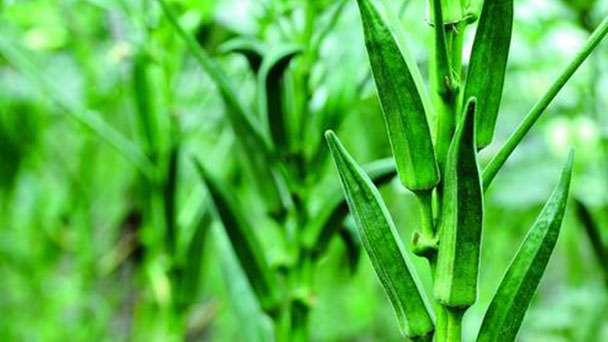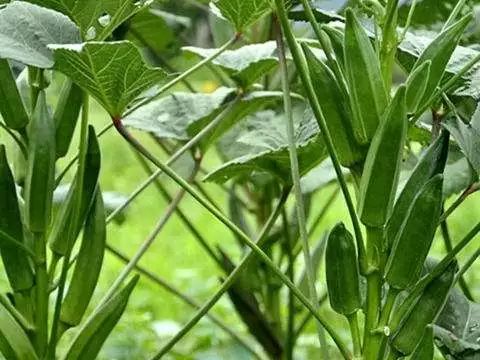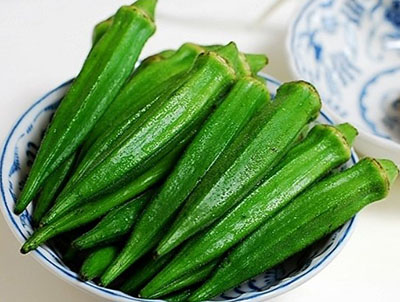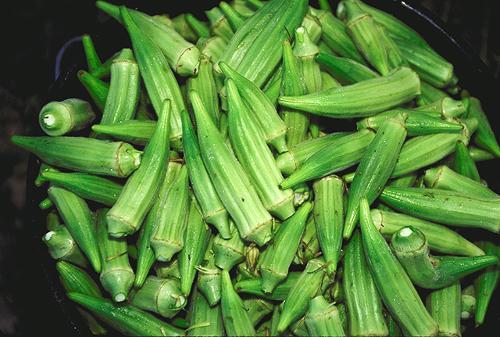Abelmoschus Esculentus profile
Written by Maggie
Nov 26 2020

Abelmoschus Esculentus is native to India and widely cultivated in the tropics and subtropics. China, Hunan, Hubei, Guangdong and other provinces' cultivation areas are also very wide. Abelmoschus Esculentus is known as the king of vegetables, with high economic use and edible value.
Abelmoschus Esculentus picture

Morphological characteristics of Abelmoschus Esculentus
Abelmoschus Esculentus is an annual herb, 1-2 m high. The stem is cylindrical, sparsely spines. Leaves are palmate 3-7 lobed, 10-30 cm in diam., lobes broad to narrow, margin coarsely toothed and concave, sparsely hirsute on both surfaces. The petiole is 7 -- 15 cm long, bristly. Stipules are linear, 7-10 mm long, sparsely hirsute. Flowers are solitary in leaf axils, pedicels 1-2 cm long, sparsely hispid. Bracteoles are 8-10, linear, ca. 1.5 cm long, sparsely bristly. The calyx is campanulate, longer than bracteoles, densely stellate short tomentose. Flowers are yellow, inner base purple, 5-7 cm in diam., petals obovate, 4-5 cm long. Capsule is cylindric, 10-25 cm long, 1-5-2 cm in diam., apically long beaked, sparsely hispid. Seeds are globose, numerous, 4-5 mm in diamhairy veins. Flowering period is from May to September.
Abelmoschus Esculentus growth environment
Temperature: Abelmoschus Esculentus prefers warm, and is cold and heat resistant. When the temperature is 13℃, ground temperature of 15℃ or so, seeds can germinate. However, the suitable temperature for seed germination and growth period is 25-30℃. The mean monthly temperature was lower than 17℃, which affected the flowering and fruition. When the night temperature is lower than 14℃, the growth is slow. Abelmoschus Esculentus has short plants, narrow leaves, few flowers and many fallen flowers.
Moisture: Abelmoschus Esculentus is drought - and wet-tolerant, but not waterlogged. Excessive soil moisture in the germination period can easily induce seedling blight. Results During the dry period, the plant growth was poor and the quality was poor.
Illumination: Abelmoschus Esculentus is particularly sensitive to illumination conditions, requiring long and sufficient illumination time. We should choose the sunny plot, strengthen ventilation, pay attention to reasonable close planting, so as not to shade each other, affect the ventilation and light.
Soil: Abelmoschus Esculentus has wide adaptability to soil. Do not choose the land, but deep soil, loose fertile, good drainage loam or sandy loam is more appropriate.The fertilizer in the early growth stage is dominated by nitrogen, and in the middle and late stage requires more phosphorus and potassium fertilizer. But too much nitrogen fertilizer, plants easy to grow, flowering and fruiting delayed, fruit nodes increased. Insufficient nitrogen fertilizer, poor plant growth affect the flowering and fruiting.

Abelmoschus Esculentus distribution range
Abelmoschus Esculentus was cultivated in Hebei, Shandong, Jiangsu, Zhejiang, Hunan, Hubei, Yunnan and Guangdong provinces of China.Native to India.It has been widely cultivated in tropical and subtropical areas due to its short growth cycle and dry heat tolerance. China, Hunan, Hubei and other provinces' cultivation areas are also very wide.
Abelmoschus Esculentus main value
Economic purpose
Abelmoschus Esculentus leaves, buds and flowers are rich in protein, vitamins and mineral salts.Seeds contain more potassium, calcium, iron, zinc, manganese and other elements. Abelmoschus Esculentus can extract oil and protein. Abelmoschus Esculentus has a special aroma, can be pressed oil, and can be used as an additive or substitute for coffee. Seeds contain about 15-20% oil and a small amount of cottonseed oil, which is slightly toxic and can be used for food or industrial use after being treated at high temperature.
Nutrition
Abelmoschus Esculentus is rich in nutrients. The young fruit contains a large amount of slimy juice and has a special fragrance.Its juice mixed pectin, cow milk and arabinan and so on. The pectin of Abelmoschus Esculentus is soluble fiber, which is highly valued in the new concept of modern health care. Regular consumption of it has the effect of nourishing the stomach and intestines.

Eating
Abelmoschus Esculentus is known as the king of vegetables. Its tender pods are tender and contain a sticky substance of pectin and polysaccharide, giving Abelmoschus Esculentus a special flavour and smoothness. Generally it can be fried food, soup, pickles, jars and so on. In addition to the young fruit edible, its leaves, buds, and flowers can also be edible.
Watch
Abelmoschus Esculentus has a long flowering period, large and showy flowers with yellow, white and purple flowers, so it is also cultivated as an ornamental plant in Taiwan, China.
Medicinal
Abelmoschus Esculentus root is used for cough relief. Abelmoschus Esculentus bark: warp is used for irregular menstruation. Abelmoschus Esculentus seeds: galactagogue is used for insufficient milk. The whole strain of Abelmoschus Esculentus: heat-clearing and detoxifying, moistening and smoothing intestines.
Latest Updated
- Benefits of Bugleweed - 7 Science-backed Health Benefits
- Bugleweed Dangers & Side Effects - Is It Poisonous?
- How to Plant Evergreen Trees - What You Should Know
- When to Plant Evergreens - Grow Guide for Evergreen Trees
- 12 Wonderful Evergreen Shrubs for Your Garden
- 12 Popular Evergreen Plants with Pictures for Beginners
- When And How To Prune A Lilac Bush Like a Pro
- How to Grow & Care for Lilac Vine (Hardenbergia Violacea)
- Japanese Lilac Tree (Syringa Reticulata) Care & Propagation Guide
- Shumard Oak Pros and Cons - What to Know
Popular Articles
- Winter maintenance of Antirrhinum Majus
- How to Grow Terminalia Mantaly Tree
- How to Grow and Care for Crossostephium Chinense
- How to grow Antirrhinum Majus in spring
- Peristeria Elata (Dove Orchid) Profile: Info & Care Guide
- Underwatered Snake Plant (Sansevieria Trifasciata) - Signs And How To Fix
- How to Care for Brazilian Jasmine Plant (Mandevilla Sanderi)
- How to Grow & Care for Graptopetalum Purple Delight in Summer
- Rosa Chinensis (China Rose): Plant Growing & Care Tips
- How to Care for Baby Sun Rose (Aptenia Cordifolia)